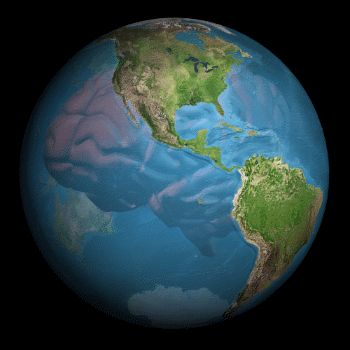On the Rental Value of Water Resources
David Spain
[Reprinted from a Land-Theory online
discussion, 16 May, 2005]
Given the increasing global demand for fresh water and the shortage
of same (especially in eastern Australia, where what appears to be a
permanent El Nino in the central Pacific is constraining rainfall), a
Site Revenue position on water is appropriate. Below is my tentative
suggestion.
1. Water (and clean air) are essential global resources. They are not
made by humanity and are 'sites'. Users & polluters of them may be
constrained by necessary regulation and may be required to pay site
revenue.
2. Water for human use comes from rain or aquifers. Appropriate
collection areas should be set aside as national parks an d state
forests. Construction of dams & pumping of aquifers have
environmental impacts and can rob future generations (i.e. are
inconsistent with inter-generational equity) and so should require EIS
and scientific endorsement.
3. Whilst delivery of the water (pumping, storage, piping, metering)
may be privatized, the basic resource must remain a public asset and
should be available at nil price (save for delivery cost), if supply
allows. Whilst the reserve right to tap into the municipal supply
(when available) would be reflected in site revenue from the benefited
sites, actually receiving piped public water should not be obligatory
since people may prefer to avoid delivery costs by installing
rainwater tanks. Privatization of water creates disastrous &
oppressive private monopolies and should be forbidden (I believe there
are South American examples of this).
4. Where there is a shortfall in supply, a base volume per person
should be supplied free (or cheaply), with only delivery costs
recovered. Thereafter, increased consumption should be priced on a
sliding scale to limit waste. Where supply is scarce, desalination of
seawater and sale & distribution of the product (even if into the
public distribution system) is a legitimate private operation.
5. Dual reticulation & meterage, together with rainwater tanks,
should be compulsory in urban areas where supply is constrained. This
means tertiary treatment of sewerage for toilet flushing & garden
uses.
6. Rain falling on roofs belongs to the owners of the buildings and
need not be accounted for.
7 . A "reasonable proportion" of rain falling on broadacre
freehold lands may be retained on such land (e.g., in dams) for
private use, without payment of any additional fee: the value of this
allowance will be reflected in the site revenue. What is a "reasonable
proportion" is to be decided in the circumstances of each case
and depends on the quantum of rainfall and downstream needs
(environmental & human).
8. Water on public lands (e.g., in lakes & rivers) should not be
publicly available without a license, except for casual personal use
(e.g., filling a water bottle) as distinct from permanent (pipeline)
or mechanized (tanker) removal. Licenses should constrain consumption
to what is reasonable given supply and should be publicly auctioned in
a way that favours multiple small users rather than a few monolithic
ones.
|











